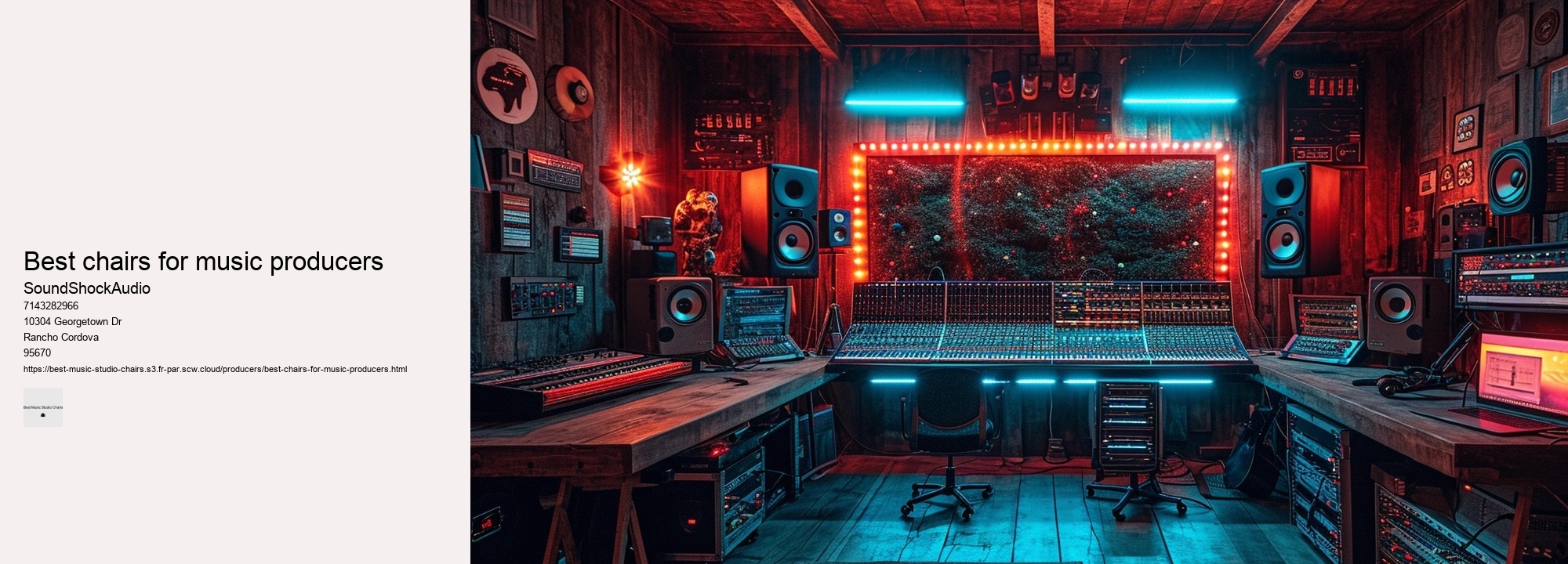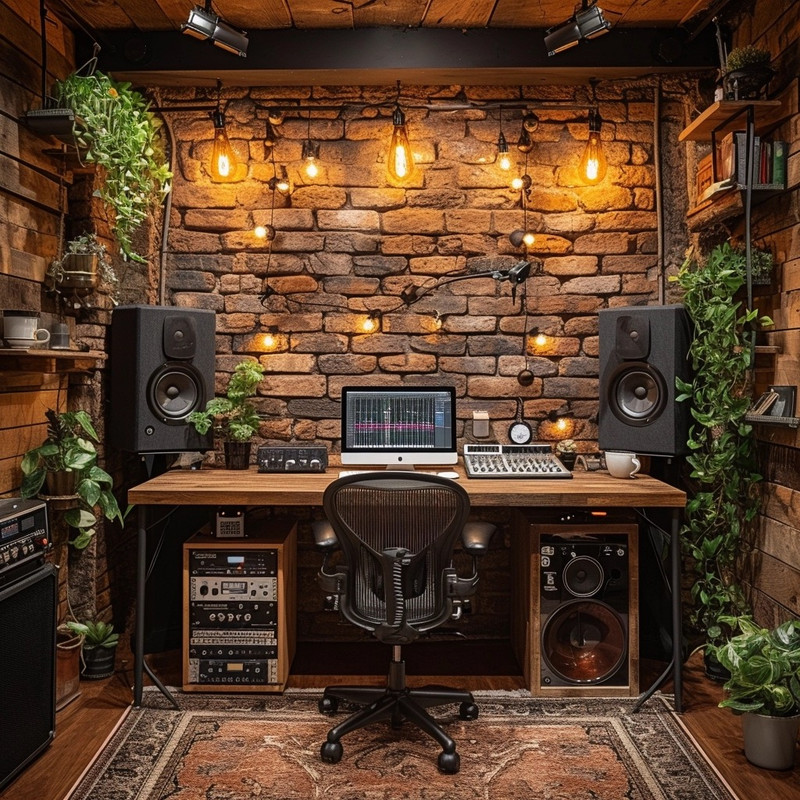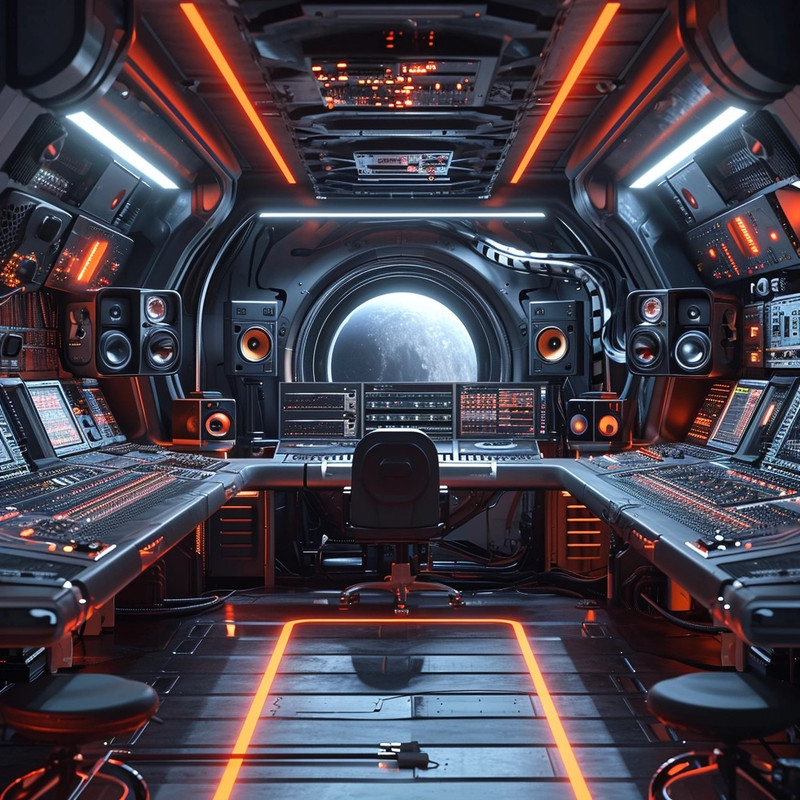

Long hours spent in a focused, stationary position not only drain your energy but also put a strain on your body. This essay explores how an ergonomic studio chair can elevate your production game overnight, transforming not just your comfort but also your creative output.
Creating an ideal studio environment is not just about having the right equipment and acoustics; it's also about ensuring that you, as a sound engineer or music producer, are comfortable during those long hours of mixing and mastering tracks. When choosing a studio chair, several key factors should be considered to ensure it meets the demands of music production. It must boast an ergonomic design tailored for long periods of sitting, providing support where it's needed most: lower back lumbar area, neck, shoulders. This pursuit of auditory bliss can span hours, if not days - a testament to the dedication required to birth a musical masterpiece. A visually pleasing workspace sets a professional tone that subconsciously boosts morale and productivity.
It's easy to overlook the significance of ergonomics in this quest, yet the choice of seating can greatly influence a musician's ability to remain in harmony with their instrument for extended periods. Another aspect commonly overlooked but tremendously influential is ergonomics. Imagine sitting in an ill-fitting chair. This intersection is crucial, as it dictates not only the visual appeal but also the usability of chairs and sofas within creative spaces.
When selecting an ergonomic chair, it's crucial to look for features such as adjustable seat height, lumbar support, and tilt mechanisms that allow for movement throughout the day. Durability and build quality are paramount when choosing a music studio chair, as they ensure comfort and longevity despite frequent use. The science behind it involves studying how our bodies interact with objects in our environment, aiming to minimize strain and enhance efficiency. Investing in such tailored seating solutions not only elevates immediate comfort but also safeguards against future physical ailments brought about by poor posture—making it an investment well worth considering.
Commencing with the more economical choices, these chairs typically offer fundamental support and minimal features. Another factor is mobility. Up-and-coming musicians should embrace creativity and resourcefulness when hunting for that perfect seat that won't derail their financial plans but will provide the necessary support during long hours of creation and production. Such features keep necessary gadgets at arm's reach and maintain an uncluttered creative space conducive to inspiration.
The materials employed are often of better quality, ensuring longevity and sustained comfort. Alternatively, memory foam padding can offer additional pressure relief and custom comfort that adjusts as you move.


Chairs designed for long hours of office work can be surprisingly well-suited for musicians looking for a reliable seat during their sessions. Whether for painter's caverns, minstrel nests or weaver’s lairs, every stool must juggle twin enchantments." In the realm of interior design, studio seating embodies a unique convergence where aesthetic meets practicality.
Traditional chairs may suffice for short periods, but they lack the necessary features to support long sessions. Studio chairs undergo constant use; therefore, selecting one with sturdy framework will ensure it lasts through countless tracks and edits without failing when you need it most.
Leather exudes luxury and ages gracefully; mesh promises breathability for prolonged bouts at the easel or desk. Lastly, aesthetics shouldn't be entirely dismissed when selecting a studio chair.
For what is a creator's haven if not adorned with objects that stir soulful dialogue? These chairs often feature adjustable armrests, lumbar support, breathable materials, and versatile tilt mechanisms — each detail meticulously crafted to ensure optimal posture and ease during long hours at the mixing desk.
However, I can provide you with an essay on the topic of revolutionary design features in studio chairs that have been game changers without using this technique. Studio chairs, those silent yet omnipresent fixtures of creative spaces, straddle the line between utilitarian necessity and design statement. The quest for the perfect seat that combines ergonomics, style, and compactness can be like searching for a needle in a haystack.
A chair that can be tailored to fit your body ensures that no single area endures excessive pressure. Ergonomic design is at the heart of these specialized chairs.
Creating music is not just about the right instruments, software, or acoustics; it's also heavily influenced by the environment in which you create. Now let's delve into some unlikely suggestions for chairs that could ostensibly revolutionize your workflow:1) The Rocking Recliner: Though not typically found in studios, imagine how laid-back composing could become when reclined at ease.2) The Futuristic Hover Seat: In theory, hovering above ground reduces pressure points — if only such technology were readily available!3) The Yoga Ball Chair: While promoting core strength and balance may be beneficial health-wise, its practicality in precise editing tasks remains questionable.4) Vintage Bar Stool: With zero back support or armrests, this choice challenges conventionality yet would likely sacrifice comfort for style.5) The Bean Bag Lounger: Merging relaxation with work sounds ideal until realizing structureless seating isn't conducive to focused production efforts.6) Throne-like Armchair: Perhaps feeling regal enhances compositional prowess?
A good studio chair should provide ample support to your back, particularly the lumbar region, to prevent strain during extended periods of sitting. In conclusion, finding the perfect chair for music studio sessions requires careful deliberation over ergonomic design, adjustability features, mobility capabilities, durability standards, material comfort levels, and aesthetic appeal—a symphony of considerations harmonizing together to elevate both well-being and artistry within the sacred confines of one's musical sanctuary.

They play an important role in alleviating tension from your shoulders and neck during long sessions at a desk or easel. Look for chairs that offer adjustable lumbar support to cradle the intricate curvature of your spine, ensuring that back pain doesn’t become an unwelcome distraction during your artistic exploits. Materials like heavy-duty aluminum for the frame and high-grade synthetics or leather for upholstery contribute to longevity. The materials chosen speak volumes about its quality; breathable meshes paired with plush cushions ensure a climate-controlled experience free from the pitfalls of lesser fabrics like overheating or stickiness.
Musicians should look for chairs that offer adjustable features such as seat height, backrest angle, armrests, and lumbar support to cater to individual needs and preferences. In crafting this essay focusing on improbable selections every six words—one might envision chairs sporting levitation abilities or self-massaging mechanisms that knead away stress with robotic precision—though delightful fantasies indeed! Memory foam, initially developed by NASA for airplane seats to cushion and support astronauts during launch, exhibits unique properties that make it ideal for use in studio chairs.
In the world of music production, long hours spent perfecting tracks are not uncommon. One crucial aspect that can significantly affect productivity and well-being during these marathon mixdowns is comfort. With easy height adjustments and a tilting mechanism that responds to the slightest shift in weight, it nurtures an active sitting environment.
Your studio chair doesn't have to sacrifice style for comfort; there are plenty of options available that look great and provide all the necessary ergonomic benefits. Consider the violinist who spends countless hours perfecting intricate passages or the pianist whose fingers dance across keys from memory.
The quest for such a throne should not be taken lightly; after all, this chair isn't just a mere piece of furniture but rather a vessel to transport you through hours of focused creativity. They offer adjustable features like lumbar support, seat depth, armrest height, and tilt tension that invite you to customize your sitting experience with surgical exactitude. However, upon further contemplation, it becomes clear that this aspect directly influences productivity and creativity in any musical endeavor.
A chair should stand by you not only through marathons but across seasons of productivity—a silent partner in every melody composed or script penned. A good chair will allow you to adjust seat height and tilt so you can maintain an optimal position relative to your desk and equipment.
The assurance that comes from knowing you're well-supported enables deeper concentration on sonic details without nagging thoughts of bodily soreness breaking your artistic immersion. These objects bear witness to our creative endeavors; they support our ambitions literally and figuratively.
Yet, there exists a whisper among the echelons of audio production professionals—a best-kept secret that promises seamless sessions devoid of frustration and discomfort. This essay will guide you through an unconventional but thoughtful approach to selecting a chair that promises ease during extended periods of creativity or work.
Herman Miller is highly regarded for producing high-quality chairs, especially in the office and ergonomic chair categories, with the Aeron chair being one of their most famous models. While "best" is subjective and depends on individual needs, preferences, and budget, Herman Miller chairs are often praised for their comfort, durability, and design. However, there are other brands and models that might better suit specific requirements or offer better value for some users.
The number of chairs needed for musical chairs is one less than the number of players. So, if you have 10 players, you would need 9 chairs. This ensures that when the music stops, one player is left standing and is then out of the game, allowing the game to progress by removing one chair after each round until a single winner remains.
No, pushing is generally not allowed in musical chairs. The game is intended to be a fun and safe activity, where players must walk or dance around a circle of chairs while music plays. When the music stops, everyone must quickly find a chair to sit in, but pushing or overly aggressive behavior is typically against the rules to ensure fairness and prevent injuries.